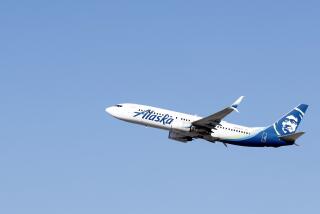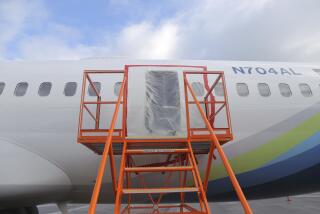What brought down TWA Flight 800? Group wants investigation reopened
Federal officials are weighing a request to reopen the investigation of the 1996 explosion and crash of TWA Flight 800 that went down off the coast of Long Island, killing all 230 people aboard.
A group of former investigators, interviewed in a documentary to be released next month, have petitioned the National Transportation Safety Board for the new probe. They argue that new evidence shows that an external force, from something such as a rocket or missile, may have brought down the Boeing 747 minutes after it left New York’s John F. Kennedy International Airport.
The petition claims “new analyses of the FAA radar evidence demonstrate that the explosion that caused the crash did not result from a low-velocity fuel-air explosion as the NTSB has determined. Rather, it was caused by a detonation or high-velocity explosion.”
The theory of such a strike was heavily investigated by the FBI and other agencies at the time and found to be unsupported. The NTSB eventually determined that a center fuel tank had exploded when an electrical short-circuit caused a spark.
Tom Stalcup, a coproducer of the documentary to be aired on the cable TV premium channel Epix next month, told CNN’s morning show ”New Day” that there was radar and other evidence for an external explosion.
People have come forward, “all saying the same thing: that there was an external force -- not from the center wing tank, there’s no evidence of that -- but there is evidence of an external explosion that brought down that plane,” Stalcup told the cable news program.
The NTSB, which investigated the crash, said it had received the petition and will weigh the next step. It usually takes 60 days for the agency to make its determination.
“The NTSB will review the details of it and will respond to the petitioners once a determination is made,” said Kelly Nantel, director of the agency’s office of public affairs. “As required by NTSB regulation, a petition for reconsideration of board findings or a probable cause determination must be based on the discovery of new evidence or on a showing that the board’s findings are erroneous.”
Nantel noted, “While the NTSB rarely re-investigates issues that have already been examined, our investigations are never closed and we can review any new information not previously considered by the board.”
She also defended the original NTSB probe, which lasted four years.
TWA Flight 800 had just left JFK at about 8:30 p.m. on July 17, 1996, en route to Paris when it exploded in mid-air, then crashed off the coast near East Moriches, N.Y. At the time it was the second-deadliest crash in U.S. history with all 230 passengers and crew killed.
The NTSB probe was one of the most complex and costly the agency has ever done. It spent months salvaging every piece of the doomed plane from the ocean it could find, then rebuilt it in a hangar in Calverton, N.Y., before determining that the explosion was in the center fuel tank and the probable spark came from an electrical system short-circuit. New safety requirements were added to prevent such explosions in the future.
At the time there were eyewitness reports of flashes of light in the sky when the plane went down. Conspiracy theorists argued that it had been shot down by a rocket or missile. Some theorists blamed terrorists while others argued that the missile could have been mistakenly fired by U.S. naval forces and that the government’s role was being covered up.
The FBI investigated for 16 months before deciding there was no evidence of any criminal activity.
ALSO:
No sign of Jimmy Hoffa’s remains at dig site
Tombstone shaves years off age of N.Y. Mayor Ed Koch
Court upholds Arizona law that denies bail to certain immigrants
More to Read
Sign up for Essential California
The most important California stories and recommendations in your inbox every morning.
You may occasionally receive promotional content from the Los Angeles Times.











